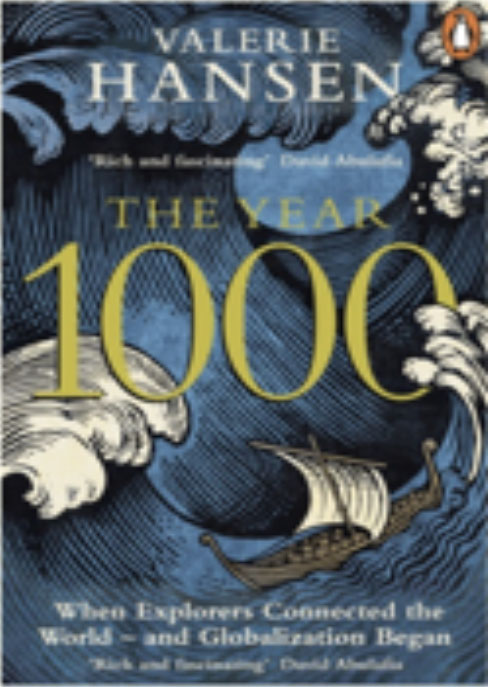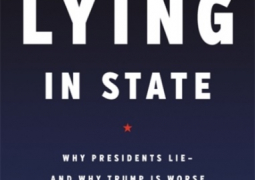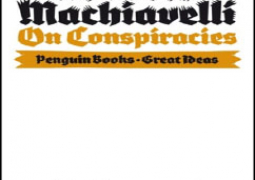
Most people would be forgiven for thinking that globalization was the result of late 20th Century forces bringing the far-flung corners of the globe together into a global community. As historian Valerie Hansen explains in her new book, The Year 1000: When Explorers Connected the World — and Globalization Began, however, that would be a mistake. Instead, the processes that we associate with globalization, the exchanges of technologies and ideas, the homogenization of culture, the ease of travel and communication, have deep roots and, as the title suggests, the year 1000 BC, as well as the years on either side of it, was crucial to these phenomena.
One of the key developments of this period was the gradual coalescence of many parts of the globe into membership of one of the major religions that would come to dominate the sacred landscape for the next several centuries: Christianity, Islam, Hinduism, Buddhism, and Judaism. Slowly but surely, these faiths solidified their hold on most of the populations of Europe, Asia, and North Africa, particularly as powerful leaders adopted religion in an effort to shore up their power. Then, as now, religion also impacted politics, and Hansen shows us how religious affiliation shaped the trading and power blocs of Asia.
Indeed, this slender book is packed full of fascinating historical tidbits for both the academic historian and the general reader. We learn, for example, of the ways in which the Vikings played a key role in the globalizing impulses of the year 1000, ranging both east and west in their explorations, ending up on the coast of Newfoundland and in the lands of Eastern Europe. While their influence in North America would be rather negligible, they would come to have an enormous influence in the east, where they often became part of the ruling powers, as well as allowing for the smoother transfer of goods back to their homelands.
However, one of the best things about this book is that it highlights areas outside of Europe. Thus, we learn that the Americas were far more tightly woven through trade than most (white) people assume, with contacts between such widely different groups as the Maya of Mexico and the Puebloan peoples of New Mexico. Hansen also shows how the various nations and peoples of Africa, both north and south of the Sahara, had a sophisticated network of trade routes that paved the way for later European exploitation.
Where The Year 1000 really sparkles, however, is in its final chapter, in which Hansen demonstrates how China was, arguably, the most globalized place on the planet at this period. It had trading contacts with numerous other polities across Eurasia and even into Africa, and its port cities in particular saw traders from numerous places. What’s more, China was also noted for its ability to produce large amounts of manufactured goods — particularly pottery — due in no small part to its enormous labor force (even at this point in time it was one of the most populous places on earth).
There’s quite a lot to love about this book, and Hansen keeps her story moving along a brisk pace. However, I do have a few quibbles with Hansen’s approach to her material. There were a few times where it felt as if she were trying to bend the evidence so that it met her conclusion, rather than the other way around. What’s more, she seems to be working with a rather flexible definition of “globalization,” so that it comes to mean basically what she needs it to mean at a given point in her story. Furthermore, the fact that she clearly wants to keep the momentum of her story means that sometimes she glosses over important details, so that we’re left rather breathless, and probably slightly confused, by the time that we get to the end of a chapter. To me, the book sometimes feels a bit too small, and as a result some of the arguments come across as being less developed than they might be in a larger, more substantive book. However, I also understand that this is intended to be a work of popular scholarship and that this imposes some limitations on what she can accomplish.
More egregious, in my view, are the moments when she gives in to the impulse to be sensationalistic in her approach to the material. The most glaring example is her rather tenuous claim that the pale figures in the ancient Mayan city of Chichen Itza may in fact be an indication that a group of Norsemen were blown off course, ended up in Mexico, and were offered up as sacrifices. Though she does cite two scholars of Mayan art who believe this might be the case, to my eye it seems like a bit of an attempt to drum up a bit of controversy to bolster the book’s popularity, particularly since this little snippet doesn’t seem central to the rest of the claims made throughout the book.
For all of that, The Year 1000 is a smart piece of popular scholarship, and a timely reminder that many of the things that we consider to be thoroughly modern phenomena have actually occurred at several other important points in history. What’s more, her work shows the value of this type of history writing, which is designed to bridge the often yawning chasm between the ivory tower of the academy and the general populace. Given that globalization continues to affect so much of our current world, Hansen’s work takes on a new urgency. As she notes again and again, we are still living with the developments that took shape in the year 1000. Religion remains one of the most important ways in which people fashion their identity, and China continues to grow as a true commercial superpower, with its influence being felt from end of the globe to the other.
As Hansen so amply demonstrates, the ways in which we contend with the forces of globalization now will continue to have ripple effects far into the future.
Available at Timbooktoo tel 4494345





